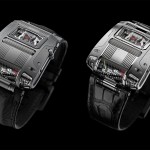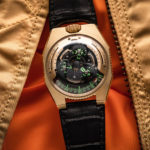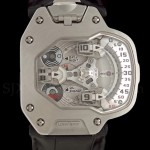Urwerk Introduces the UR-120 “Spock”
Double diverging satellite cubes.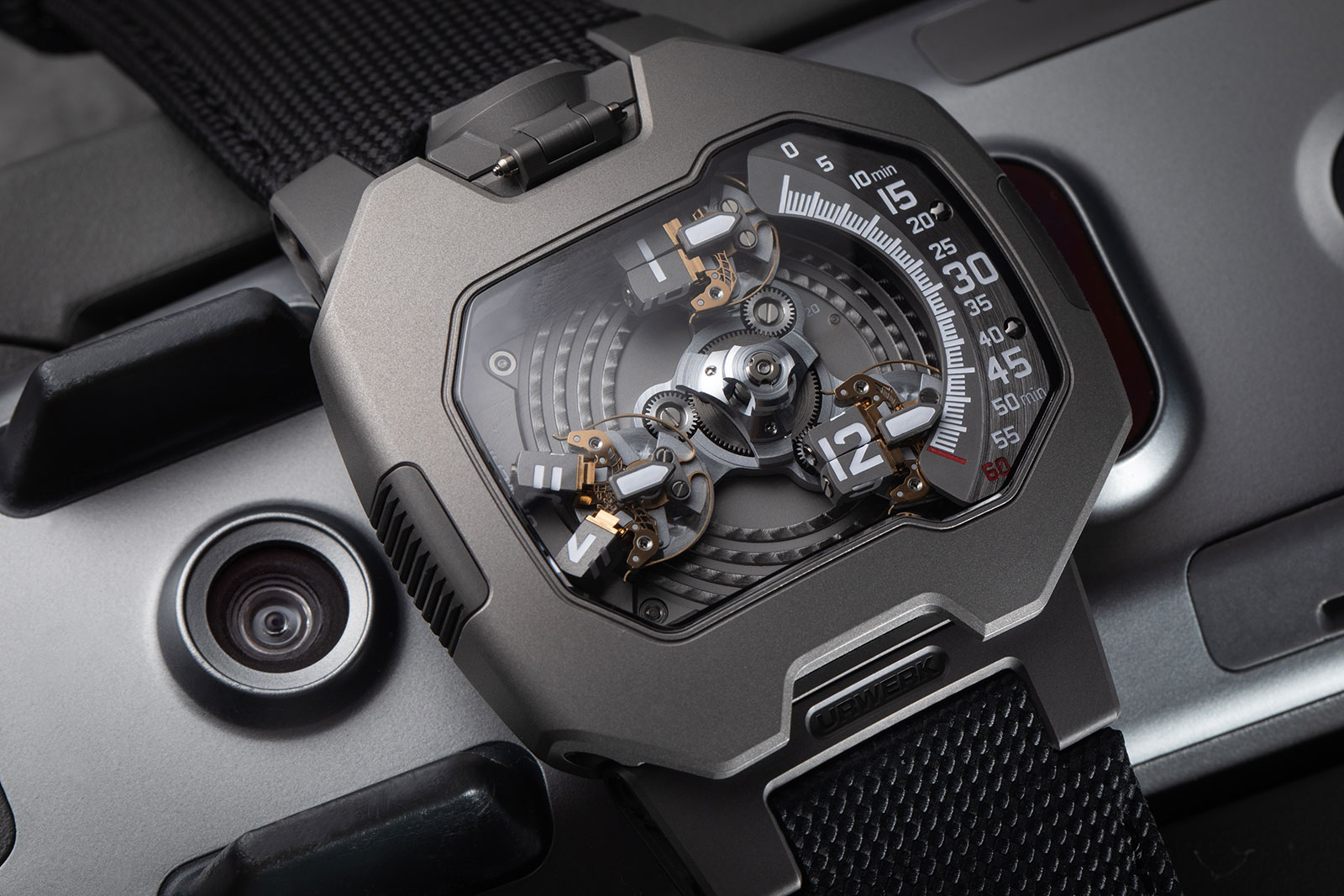
Having invented the satellite-cube hour indicator, Urwerk is undoubtedly leading practitioner of contemporary watchmaking. But the brand has continue to tweak its unconventional time displays, including the most recent swivelling-prism hours within a glass cylinder.
Now the brand has gone back to its roots while simultaneously innovating. The UR-120 “Spock” is a novel take on its signature wandering hours that has the familiar triple satellites on a carousel, but each satellite is actually a pair of cubes that sequentially split, rotate, and converge in order to display the hours.
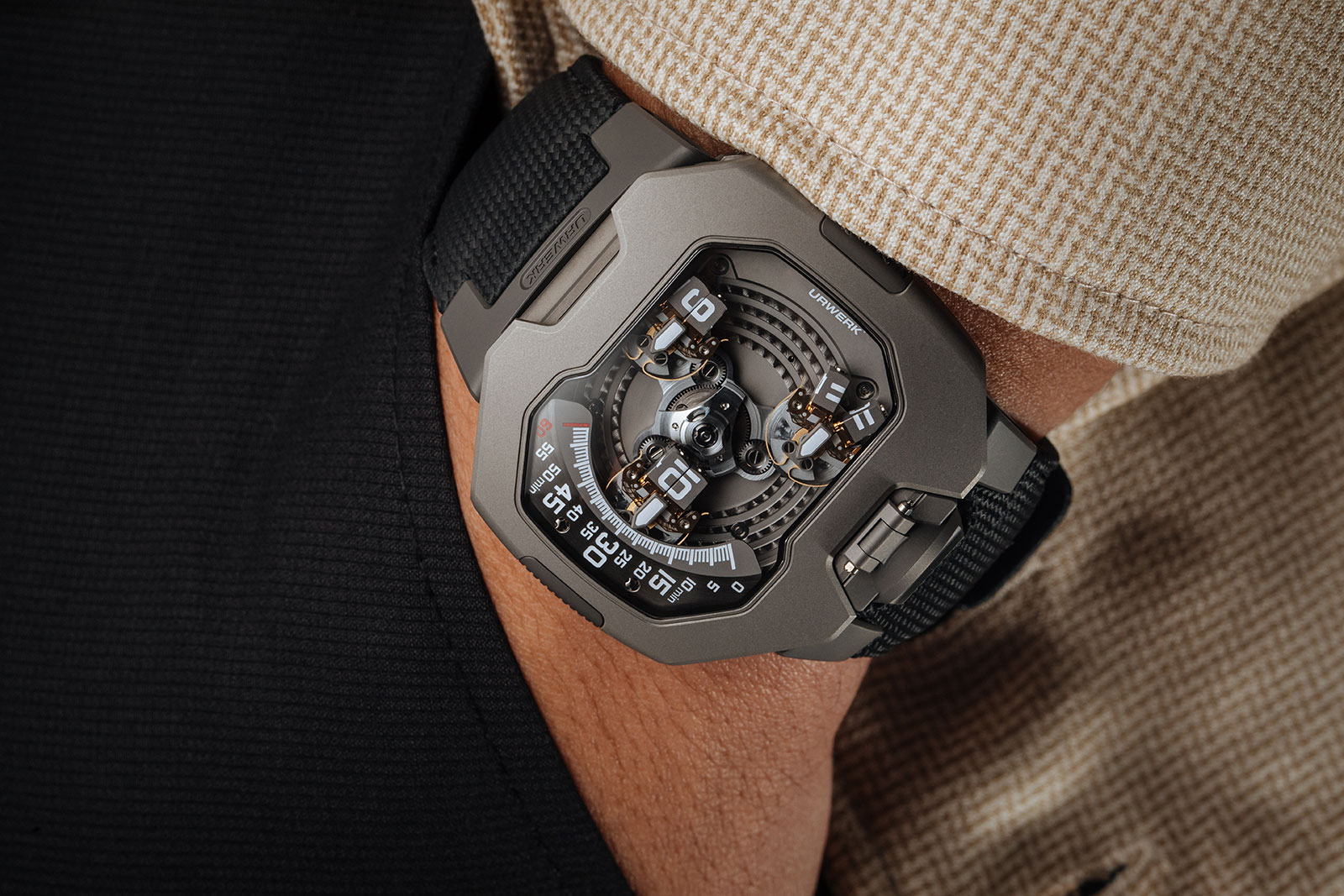
Initial thoughts
Credit goes to Urwerk for continuing to innovate with its avant-garde displays. The newest invention retains the recognisable Urwerk look and feel but creates a more dynamic visual display with the splitting and joining motions.
The two-part hour cube is clever, though not entirely new. It reminds me of the Harry Winston Opus Eleven, a far more complex interpretation of the concept that relied on four panels to display each hour numeral – one so complex the watch never made it to market.
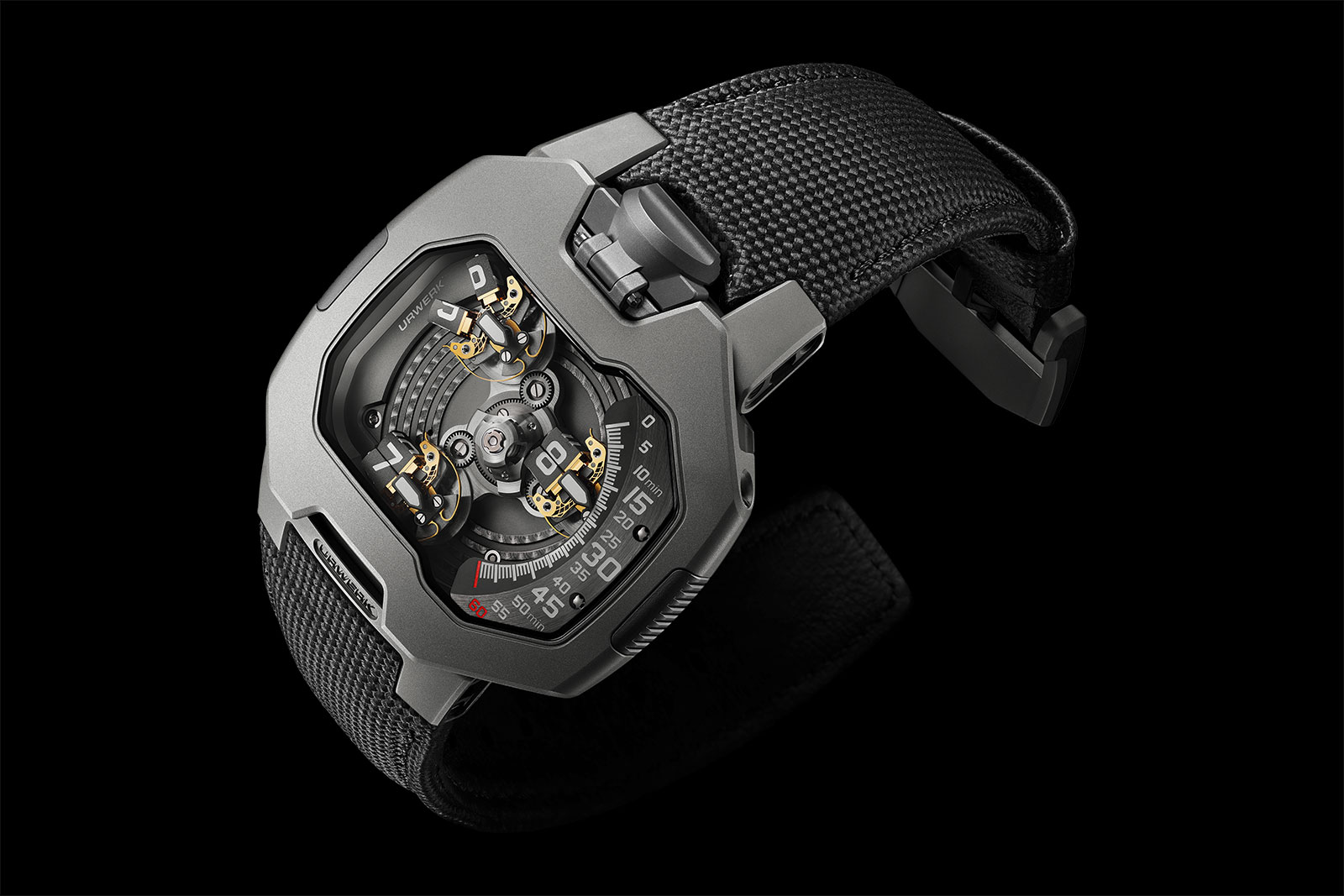
While the two-part cube display is new, the rest of the movement is similar to the UR-110, resulting in similar overall aesthetics. Though unorthodox in style, the UR-120 has a clean styling that makes it legible, though it might take some getting used to when reading the time.
One criticism of the dial design concerns the nickel alloy parts produced via the LIGA photolithography technique. They are coated in gold and have rounded, curved forms (since they are essentially springs), resulting in an organic feel that seems out of place on a sci-fi watch. That said, it’s good to see Urwerk using modern manufacturing techniques to create more versatile components.
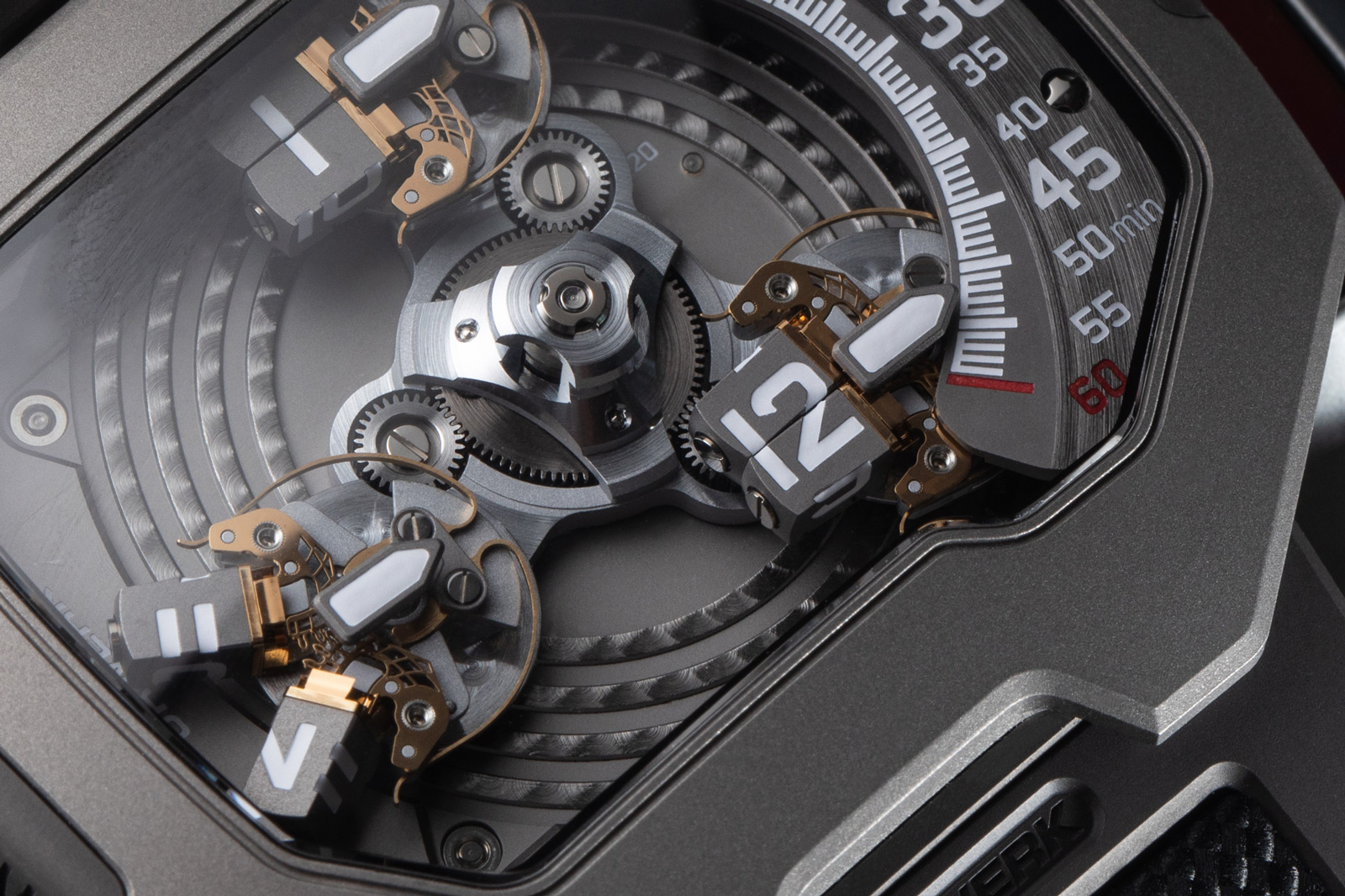
While the two-parts cubes are certainly novel, the UR-120 might be too similar to past satellite-cube hours models for current owners of an Urwerk. At the same time, though the UR-120 is more complex than many of its predecessors, it doesn’t have the same impact since the earlier watches made their debut in far more boring times.
Still, the UR-120 is priced reasonably as such things go, which is a big plus. The price of CHF100,000 makes sense as it puts the UR-120 above entry-level models with wandering hours, but below the flagship satellite-cube hours with retrograde minutes.
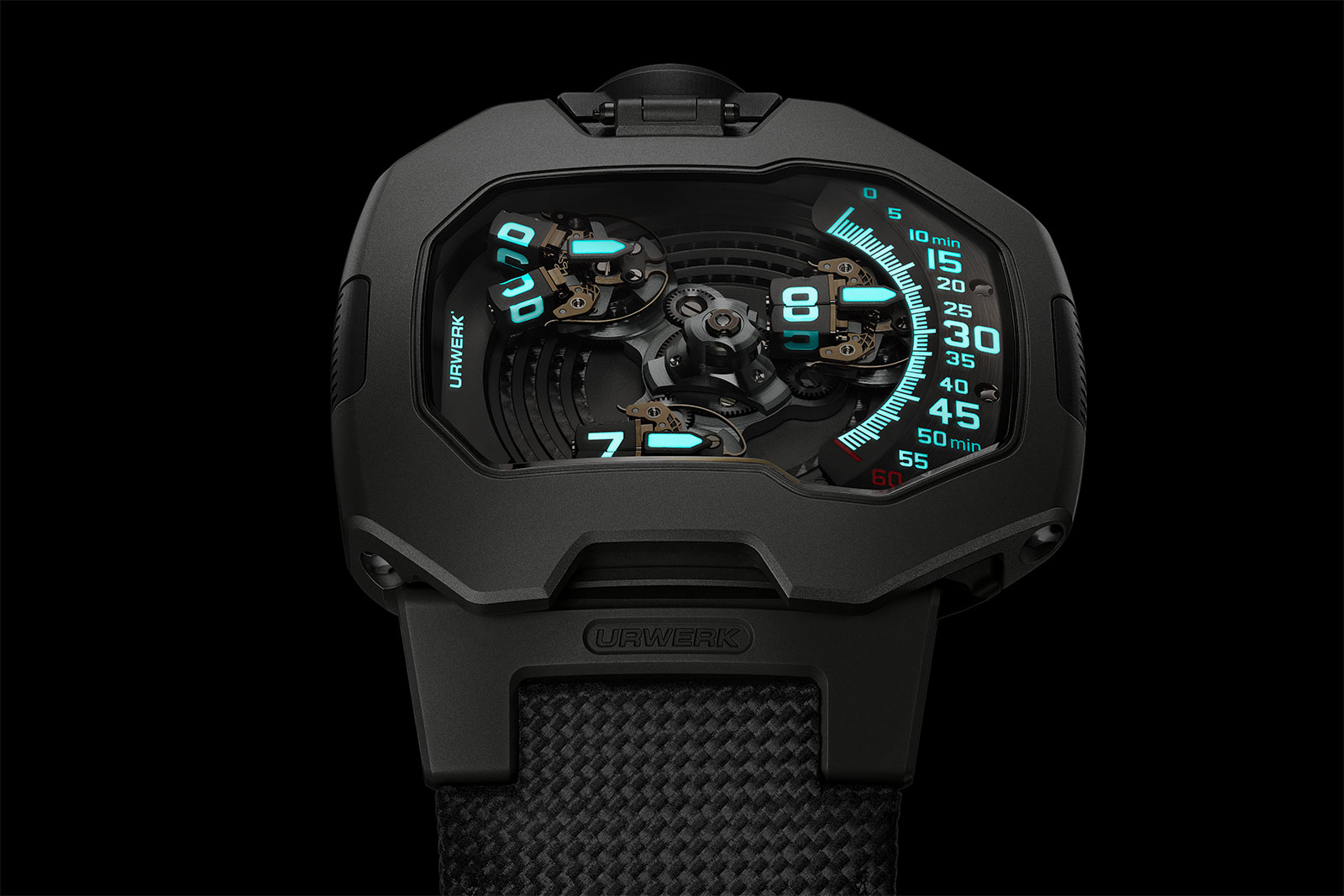
Double hours with twin-cubes
If the design of the UR-120 appears familiar, it’s because the watch is evolved from the UR-110 of a decade ago. It retains a similar case and dial, but a more complex hour display that consists of twin cubes for each hour. Urwerk co-founder Felix Baumgartner is especially proud of the new display, saying “When we realised we were going to have to open the satellite, I was over the moon.”
With each hour satellite being made up of two cubes, and each cube having four faces, each satellite carries four hour numerals for a total of 12 hours across three satellites. The twin-cube display does have a practical benefit as the hour numerals are now larger and more legible. According to Mr Baumgartner, the numerals are now 35% larger compared to those in the UR-110.
Needless to say the twin-cube display is more complicated than its single-cube counterpart, since the twin cubes have to perform three actions: rotating as well as splitting or converging. But the complexity of the display is not merely making the cubes split and combine. The motion of the cubes requires significant open space in three dimensions.
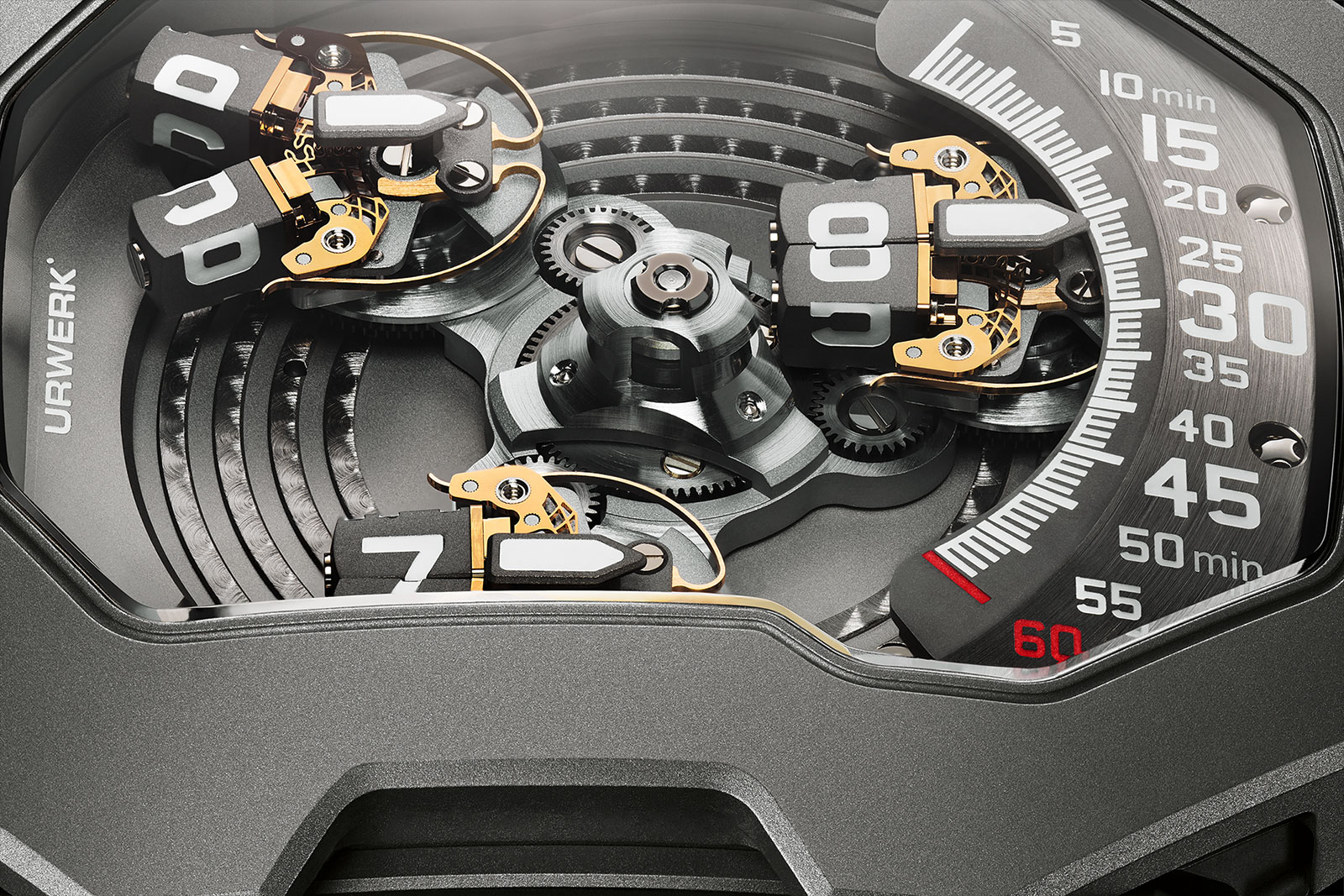
As the cubes split, they form a V-shaped angle that the brand described as inspired by the Vulcan salute, the split-fingered greeting popularised by the Star Trek. The Vulcan salute was invented by Leonard Nimoy, the actor who portrayed the Spock in the sci-fi television series, hence the UR-120’s nickname.
A key element of the new display is the gilded, lyre-shaped spring that facilitates the splitting and combining of each cube. The nickel alloy springs made in-house via the LIGA process, then PVD-coated in 24k gold, and crucial to the display mechanism.
“At the exact moment of the salute, a lyre-shaped spring opens and then closes the satellite,” explains Mr Baumgartner, “Managing energy then and there is complex and very subtle… We need to manage the opening and the stud rotation.”
Other than the twin-cube display, the rest of the UR-120 is what you expect in an Urwerk. That includes a carousel that takes the satellites around the dial, allowing the current hour satellite to double up as the minute hand.
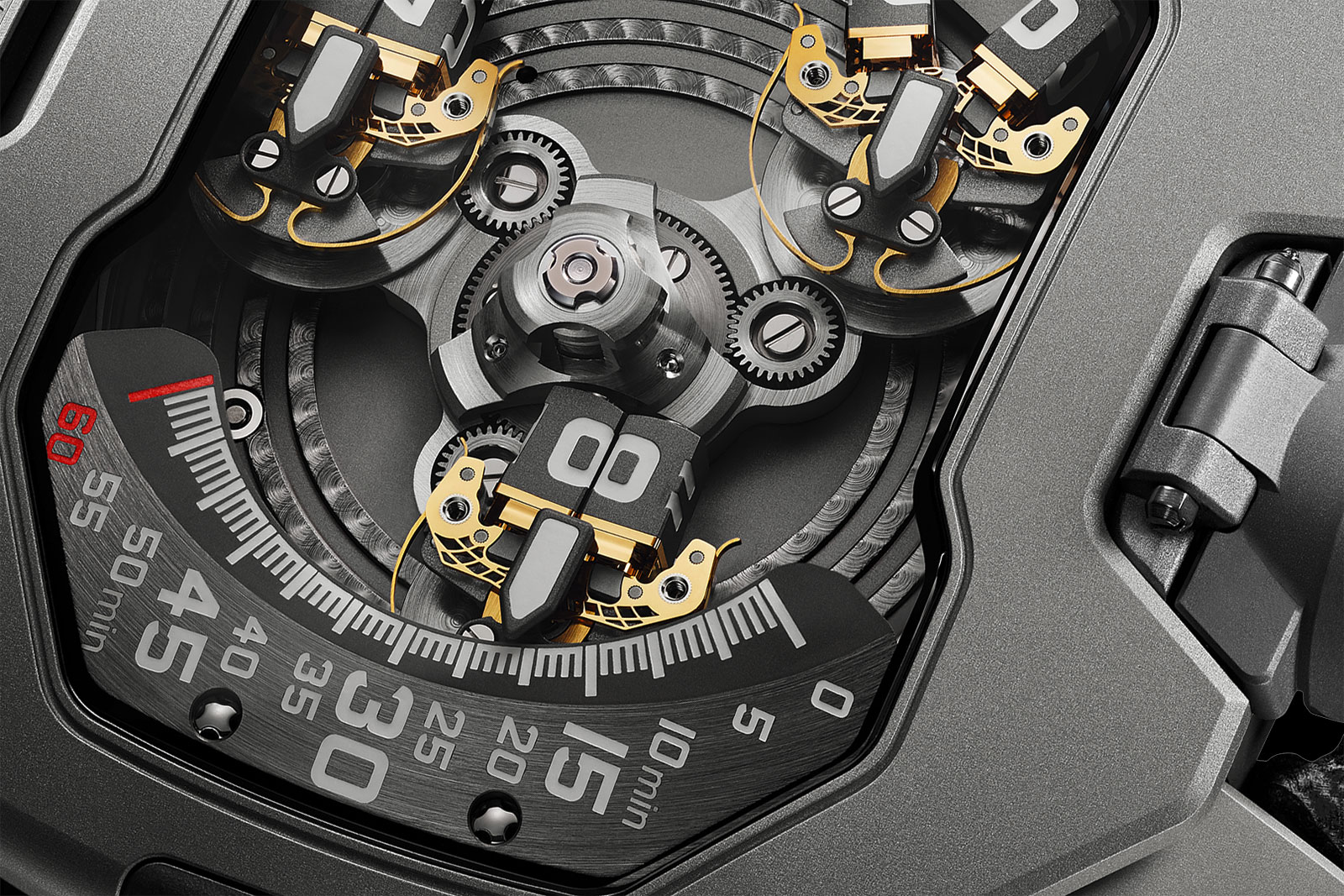
As is tradition for Urwerk, the unique time display module is mounted on a reliable base movement, in this case a Zenith Elite automatic calibre. Also found in the UR-100V, the movement has been upgraded with a propeller-shaped gear on the rotor to moderate the rate of winding.
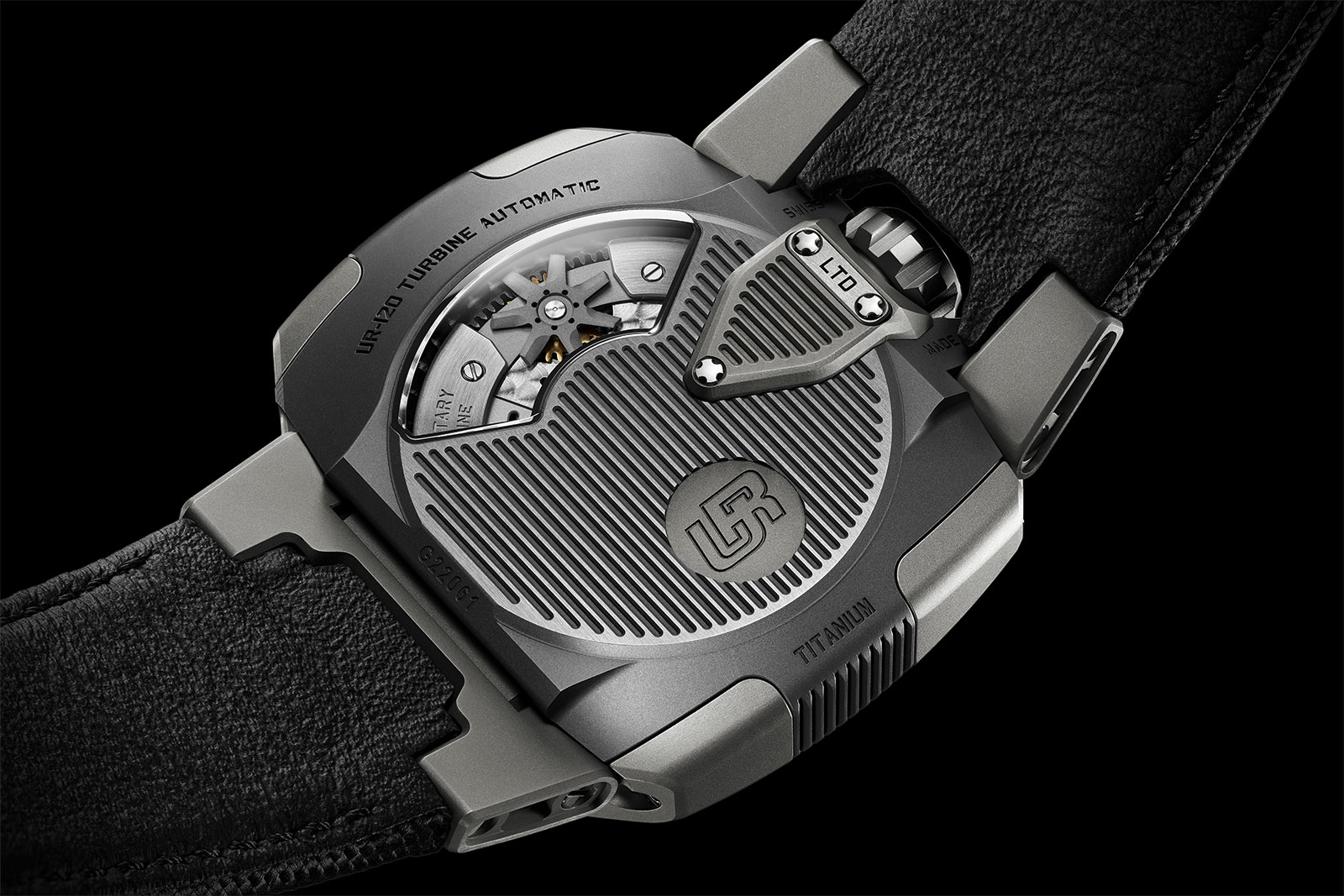
The case is comprised of two metals, with the darker components being made of titanium, while the rest is in steel
Measuring 44 mm by 47 mm on the front, the dimensions of the UR-120 are similar to the UR-110. But the styling of the case has been refined and simplified. Amongst other things, the screws and notches found on the on the front plate of the UR-110 have bee done away with, giving the UR-120 a sleek, streamlined look.
And in an unusual move for Urwerk, the case incorporates actual lug. This turns out to be a good design choice as the lugs create a visual break between the various segments of the case, avoiding the overly wide and long look of the UR-110.
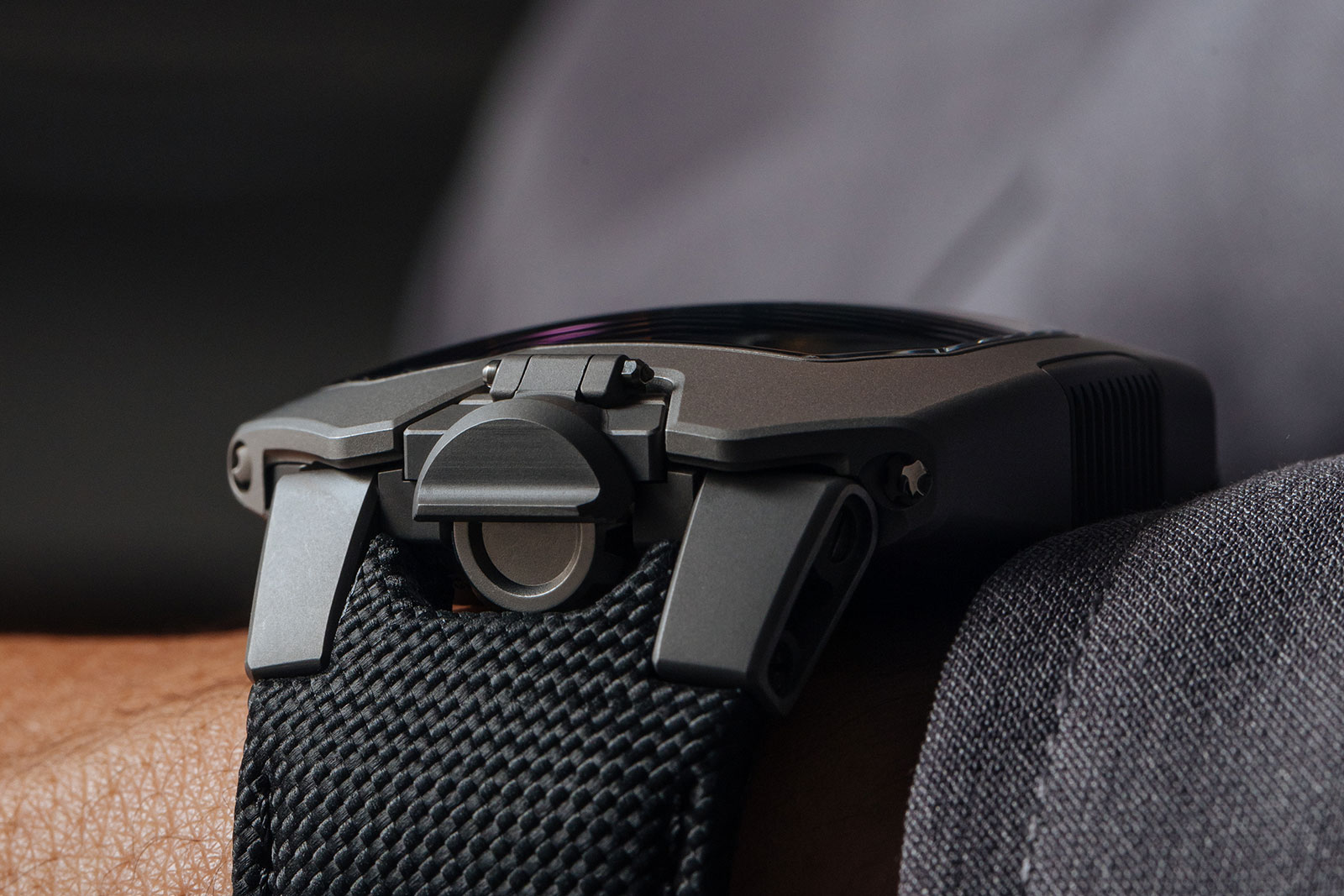
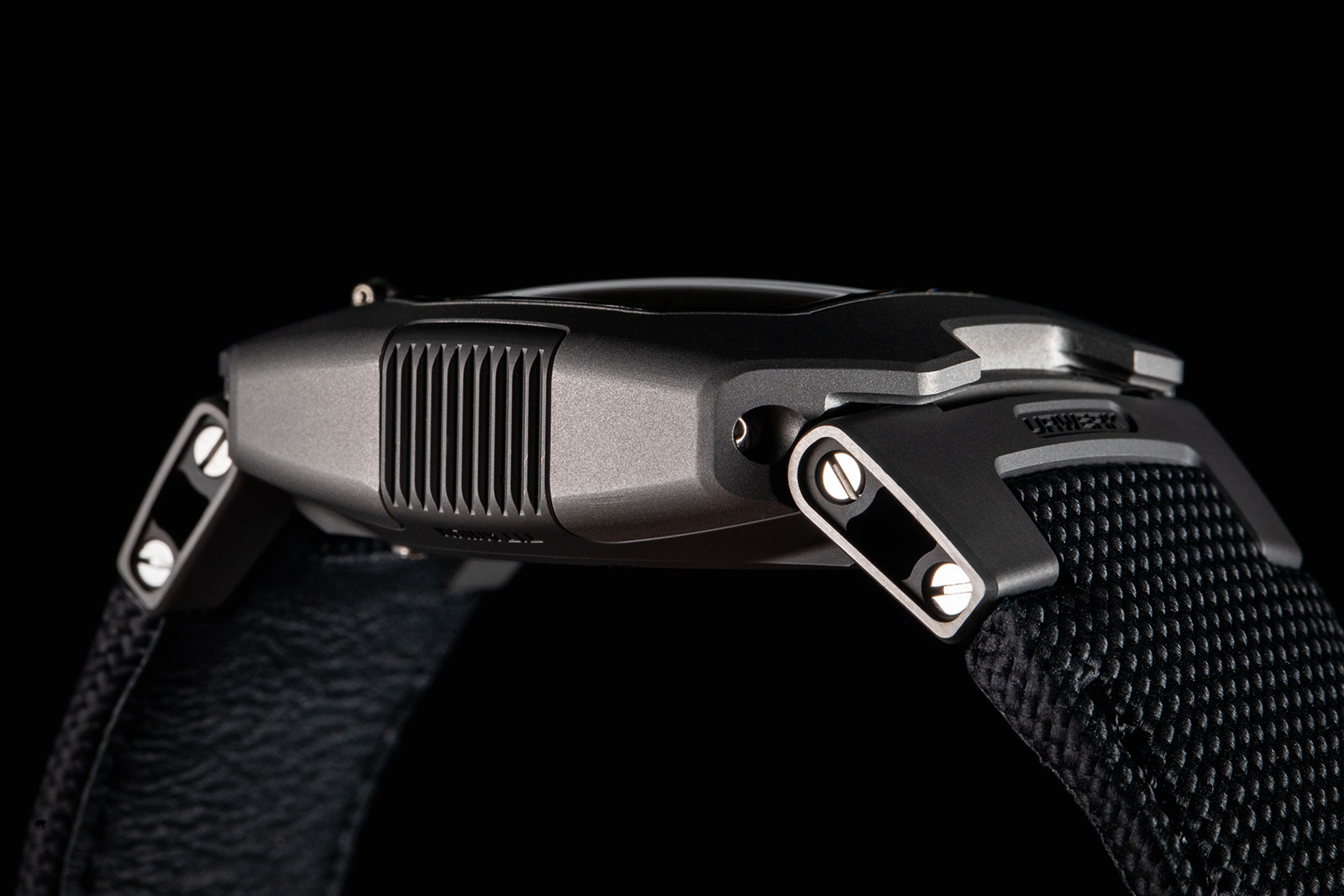
Key Facts and Price
Urwerk UR-120 “Spock”
Diameter: 44 mm x 47 mm
Height: 15.8 mm
Material: Steel and titanium
Crystal: Sapphire
Water resistance: 30 m
Movement: UR-20.01
Functions: Hours and minutes
Winding: Automatic
Frequency: 28,800 beats per hour (4 Hz)
Power reserve: 48 hours
Strap: Embossed calf leather strap
Limited edition: No, but limited by production
Availability: At Urwerk retailers
Price: CHF100,000
For more, visit Urwerk.com.
Back to top.

